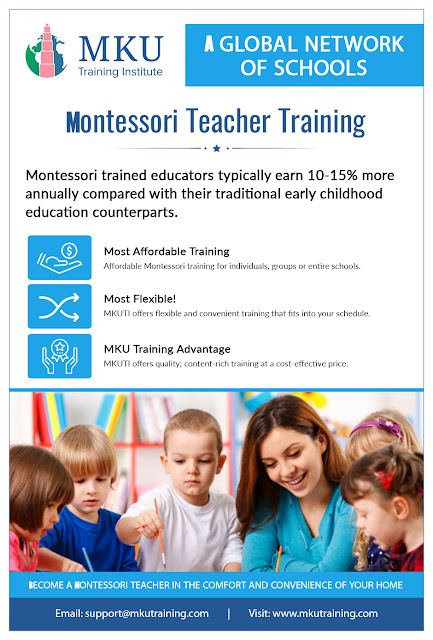Montessori education is gaining immense popularity. One of the reasons is the qualities that these teachers have, which sets them apart from the rest. So, here’s the list of qualities Montessori teachers proudly boast of.
The love for teaching and the passion to create good future individuals of today’s children are traits not found commonly. Well, there are a selected few who truly have the desire and zeal to teach. However, having a desire to teach and handling students across varied age groups in a classroom setting are as different as they can be. Here’s where the role of Montessori training center comes in.
The need for Montessori training
The right Montessori training center like MKU training boasts of a team of experienced faculty who are experts in their field and ensure providing the best training in a bid to provide the right skills to all those who love teaching. They ensure building the skills required by Montessori teachers.
To understand the characteristics of good Montessori teachers, it is important to first understand the environment of an ideal Montessori classroom.
It is not like a typical classroom, where the teacher presents the lesson while the students listen. In a Montessori classroom, all the children are occupied with their own work. They are completely engrossed in their work, which they mostly do in a group along with a guide.
Montessori education relies on a completely prepared environment. The children come and get involved in this environment, while learning and exploring new things every day. The material used in this environment is specific to Montessori education. It is created in a way that children can figure out errors and rectify them too. However, a guide in the form of a well trained teacher assists them efficiently. As the Montessori education is ways apart from regular education, it is important for teachers to understand this method and guide the children in accordance.
Qualities of a Montessori Teacher
So, here are the characteristics Montessori teachers develop through the course so as to carry out this unique form of education in its true spirit.
- She is calm and patient with the children.
- She does not put the focus on herself or her preaching. Instead, the focus is on the child who is busy learning and exploring.
- She is well versed with the unique material and teaching methodology of Montessori education.
- She is responsible for building the connection between the children and materials.
- She is respectful as she treats the child as a unique individual.
Besides the qualities imbibed through the teacher training program, Montessori teachers have other innate qualities that make them the perfect fit for their job.
- Warm and pleasant
- Communicates lovingly with other staff too.
- Models expected classroom behavior
- Is sensitive and knowledgeable
- Observant
- Thorough professional
Montessori education is different from the regular education system; therefore, the popularity. So, Montessori teachers are undoubtedly a notch above the others. Categorically, MKU training gives that much needed edge to its students through the Montessori teacher certification program.
For other details, contact them at https://mkutraining.com













